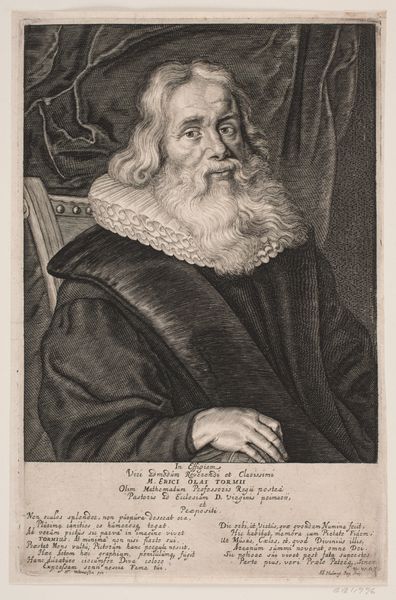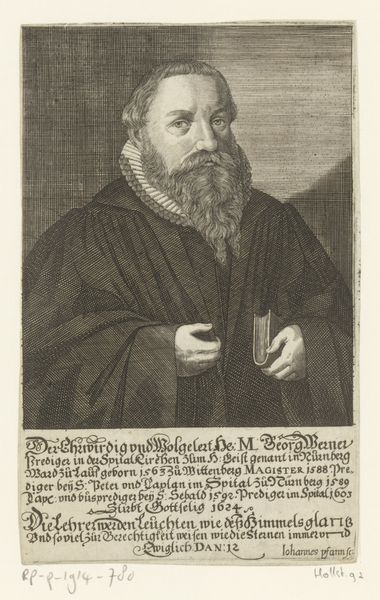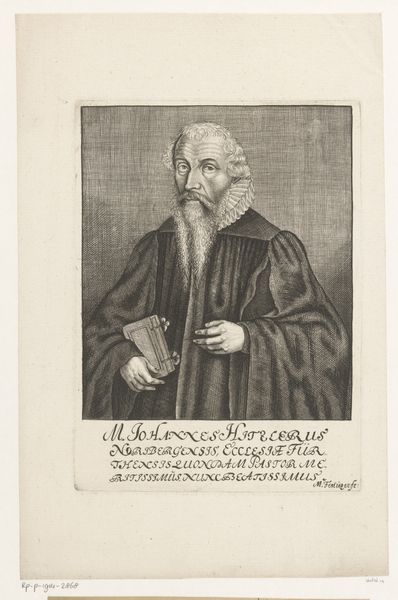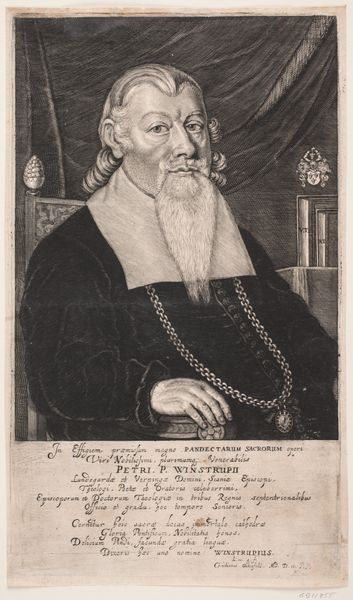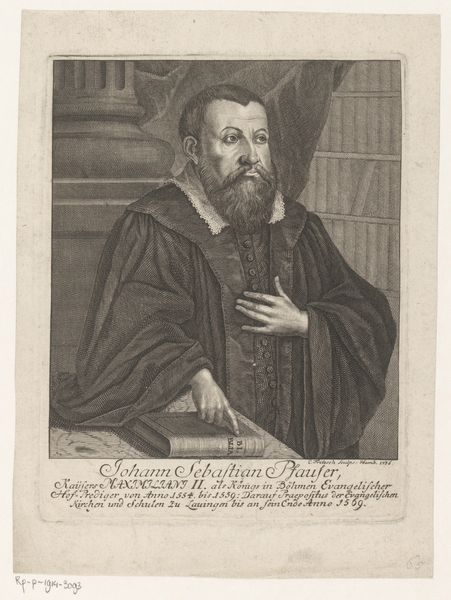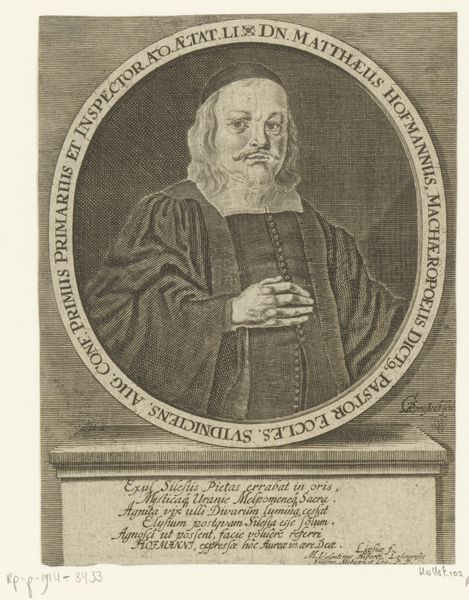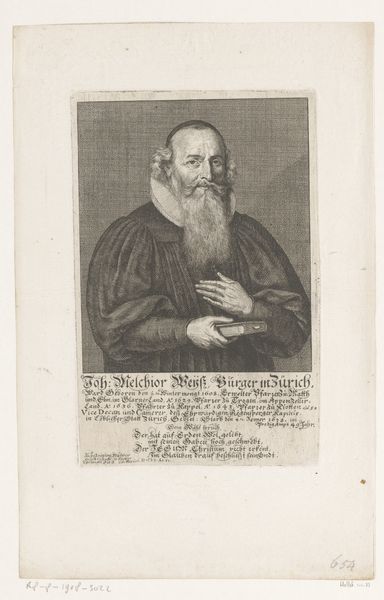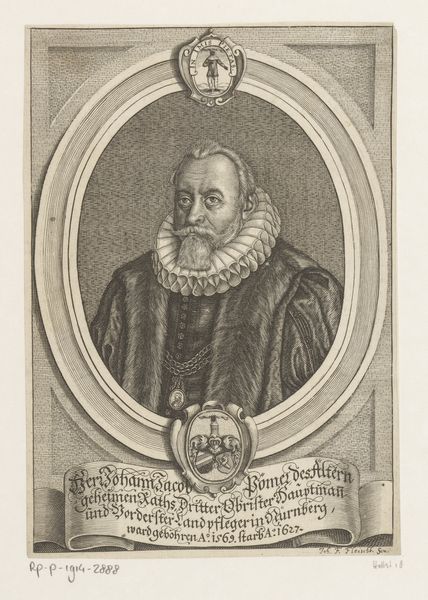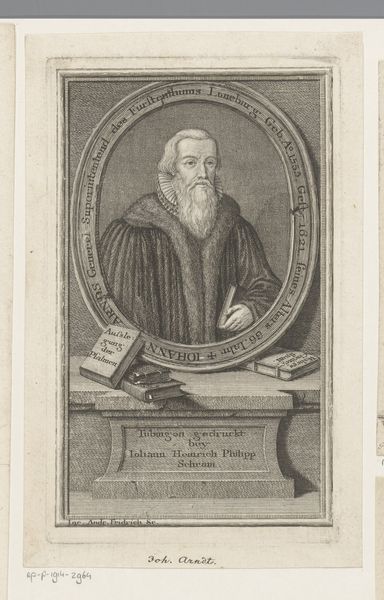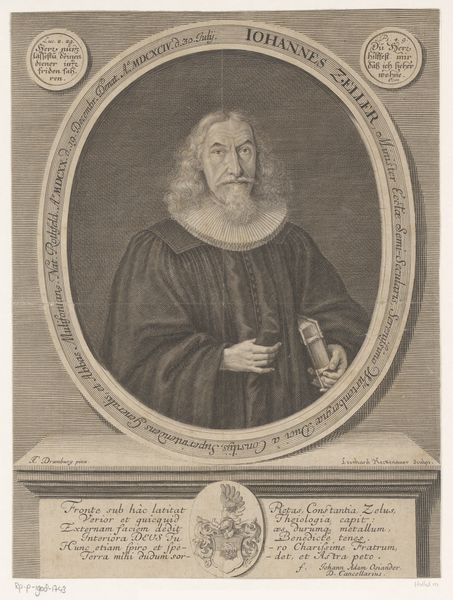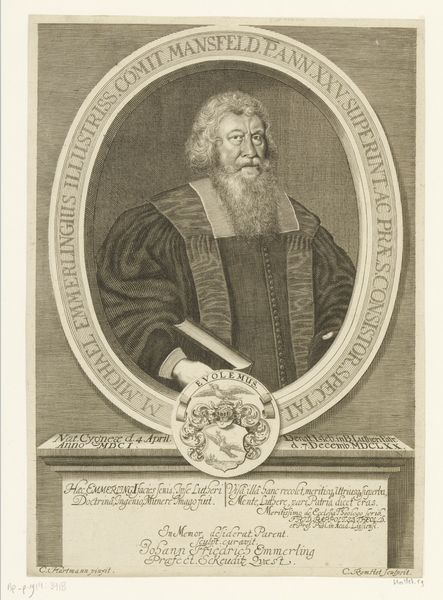
print, engraving
portrait
medieval
baroque
old engraving style
portrait reference
engraving
Dimensions: height 178 mm, width 102 mm
Copyright: Rijks Museum: Open Domain
This portrait of Georg Hauff, etched by Lucas Kilian in 1620, captures the Carmelite preacher holding a book and a flower. The book, likely a religious text, symbolizes knowledge and devotion, anchoring him in a tradition of scholarship and faith. Note the flower he holds—a motif that recurs across time. From ancient Greece, where flowers were emblematic of renewal and the ephemeral nature of life, to the Renaissance vanitas paintings reminding us of mortality, the flower’s symbolism is layered. It evokes the transience of earthly existence, a theme echoed in the solemnity of Hauff's gaze. Here, it appears alongside a book, contrasting divine wisdom with the fleeting beauty of nature. It is the tension between the eternal and the temporal that engages us, stirring deep within our collective memory. Like flowers placed on graves, this detail speaks to our subconscious awareness of life’s delicate, transient nature. This image is a potent reminder of the cyclical dance between life, death, and rebirth.
Comments
No comments
Be the first to comment and join the conversation on the ultimate creative platform.
